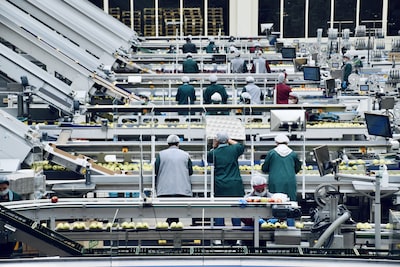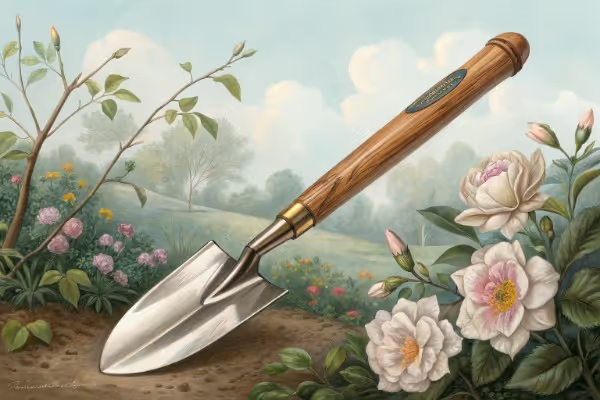What to Plant in May for a Beautiful Spring Garden

What to plant in May
Wondering what to plant in May? Sow zinnias, cosmos and marigolds now for vibrant bursts of color, transplant tomatoes and peppers once frost risks fade, and direct-seed cucumbers for crisp summer harvests. Here's how to get your garden thriving this month and set the stage for a lush, blooming spring.
Cheatsheet: May Planting Guide for Color & Yield
🌸 Flower Power
- Direct sow: cosmos, zinnias, marigolds, nasturtiums
- Transplant: petunias, geraniums, impatiens, snapdragons
- Stat: Zinnias can bloom in 60 days, attracting pollinators
🥬 Edible Selection
- Plant: bush beans, beets, carrots, chard, summer squash
- Herbs: basil, dill, cilantro
- Tip: Beans fix nitrogen, feeding your soil
- Nutrition: Chard provides iron, A, C, and K vitamins
🌳 Shrubs & Perennials
- Install: hydrangeas, lavender, phlox, peonies
- Water: deeply at root zone, 1 inch/2.5 cm weekly
🌱 Timing & Conditions
- Soil temp: 55°F/13°C minimum
- Night temp: above 50°F/10°C for heat lovers
- Frost risk: pass average last frost date first
🛠 Tools and Products You'll Need
- Hand trowel
- Watering can or soaker hose
- Mulch for moisture retention
- Organic compost
- Garden gloves
⚡ Quick Steps
- Prep beds: remove weeds, loosen soil, add compost (prepTime: 30 min)
- Sow seeds/transplants: follow seed packet depth/spacing (performTime: 45 min)
- Water gently: keep soil moist, not soggy (performTime: 15 min)
- Mulch: 2 in/5 cm layer to retain moisture (performTime: 10 min)
- Label: mark plant locations for tracking (performTime: 5 min)
I start by checking two numbers: my last spring frost date and my soil temperature at 4 inches deep 10 cm.
May usually gives me a green light for warm-season planting in zones 5 to 9, once nights hold at 50 F 10 C and soil reads 60 F 16 C or warmer.
“Right plant, right place.” Beth Chatto said it first, and May rewards that discipline with fewer pests, fewer losses, and more bloom.
For dates, I lean on the USDA Plant Hardiness Zone Map and NOAA climate normals, then adjust for my microclimate: brick walls, pavement heat, and wind traps shift reality by a week or two.
A soil thermometer beats guesswork every time, and it costs less than a flat of dead tomatoes.
- Zinnia: direct sow once soil hits 65 F 18 C; choose ‘Benary’s Giant’ for long stems and mildew resistance.
- Cosmos: airy screens by midsummer; ‘Rubenza’ and ‘Sonata’ stay tidy in small beds.
- Marigold Tagetes: pest-tolerant edging; French types fill gaps, African types carry big heads.
- Tithonia Mexican sunflower: hummingbirds treat it like a fueling station; stake early.
- Nicotiana: evening fragrance, steady pollinator traffic.
I sow these shallow: about 0.25 inch 6 mm deep on a calm morning, then water with a fine rose to avoid crusting.
If I need speed, I buy cell packs with tight internodes and no flowers yet, which root and branch better than bloom-heavy starts.
- Salvia nemorosa and Nepeta: drought-leaning, deer usually pass them by, and both rebloom after a cutback.
- Echinacea and Rudbeckia: reliable backbone through August; look for powdery mildew resistance on tags.
- Hydrangea paniculata: takes sun and pruning; I plant with compost and a slow-release, low-salt fertilizer.
- Roses: I inspect for clean canes and graft unions; disease codes like HR for high resistance matter in humid regions.
May planting lets roots establish before summer heat, especially with 2 to 3 inches 5 to 7.5 cm of mulch kept off the crowns.
I water deeply every 5 to 7 days for the first month unless rain totals hit 1 inch 25 mm weekly.
University extensions commonly recommend about 1 inch 25 mm of water per week for new plantings, adjusted for heat and soil type.
- Dahlia tubers: plant 4 to 6 inches 10 to 15 cm deep after frost; skip watering until sprouts show to avoid rot.
- Gladiolus: stagger plantings every 2 weeks for waves of bloom; set corms 4 inches 10 cm deep.
- Canna and Elephant ear: warm soil equals faster takeoff; I start a few in pots to jumpstart growth.
- Begonia tuberosa: shallow planting and shade in hot zones keeps them crisp through July.
The Royal Horticultural Society advises planting tender bulbs after frost, and my experience matches that to the day.
I cage dahlias at planting so I never spear tubers later with stakes.
- Tomatoes: nights above 50 F 10 C reduce transplant shock; space 18 to 24 inches 45 to 60 cm and bury to the first real leaves.
- Peppers and eggplant: warm feet needed; black plastic or dark mulch helps in cool springs.
- Basil and parsley: tuck at tomato edges as living mulch and for quick snips.
I harden transplants 7 to 10 days, then plant on a cloudy afternoon with a starter solution high in phosphorus.
Cold soil makes tomatoes sulk and taste flat, which I learned the year I rushed the season and harvested styrofoam.
- Beans: sow at 1 inch 2.5 cm once soil hits 60 F 16 C; go bush for speed, pole for long run.
- Squash, cucumber, melon: 0.5 to 1 inch 1.25 to 2.5 cm deep; row covers for cucumber beetles until flowering.
- Corn: blocks of at least 4 rows for pollination; 1 to 1.5 inches 2.5 to 4 cm deep in warm soil.
- Arugula and leaf lettuce: last cool sowings in partial shade to stretch the season.
Corn germination time drops sharply as soil warms: about 7 days near 68 F 20 C, but two to three weeks near 50 F 10 C, per land-grant extension data.
Soil pH near 6.0 to 6.8 keeps nutrients available; a simple test kit guides my lime or sulfur tweaks.
Side-dress heavy feeders three weeks after planting with a balanced 5-3-3 or 10-10-10, then mulch to lock in moisture.
- Asclepias milkweed: habitat that earns every square foot; I grow swamp milkweed in richer soil and butterfly weed in leaner corners.
- Monarda, Coreopsis, Solidago, Salvia: staggered nectar ladders into fall.
- Herbs for pollinators: thyme, oregano, dill, and chives feed beneficials while seasoning dinner.
I buy pesticide-free starts for these plantings since systemic residues can ride blooms for weeks.
Local native plant societies and the Xerces Society publish regional lists that outperform generic mixes.
- Thriller: dwarf canna, purple fountain grass, or a compact dahlia.
- Filler: calibrachoa, lantana, coleus, verbena.
- Spiller: sweet potato vine, dichondra, bacopa.
I use a peat-free, bark-based mix with added compost, then blend controlled-release fertilizer at label rate.
Self-watering inserts save plants during heat spikes and cut my daily rounds in half.
- Shade: heuchera, hosta, astilbe, pulmonaria, and New Guinea impatiens in bright shade.
- Deer pressure: lavender, nepeta, salvia, bearded iris, yarrow; I still spray a repellent the first month.
- Drought-leaning: gaura, santolina, rosemary, artemisia; teach them to root deep with infrequent, deep watering.
I group by water need to keep irrigation simple and disease lower.
Morning sun with afternoon shade gives shade-tolerant annuals the light they need without crisping.
- Zinnia or calendula between fading tulips, then cut the tulip foliage only after it yellows.
- Second sowing of bush beans two weeks after the first to smooth harvests.
- Gladiolus every 10 to 14 days for a month to keep vases full.
- Heat-ready basil two ways: Genovese for pesto, Thai basil for stir-fries.
Small, repeated plantings beat a single glut that bolts or spoils.
I track dates on plant tags with a paint pen so I can repeat what worked next year.
- Cool-spring zones 3 to 5: pansy, alyssum, snapdragon, kale, chard, peas under shade cloth, with tomatoes and peppers late May under cloches.
- Middle zones 6 to 7: tomatoes, peppers, basil, beans, squash, zinnias, dahlias; hold melons until soil really warms.
- Warm zones 8 to 9: sweet potatoes, okra, cowpeas, melons, heat-tolerant petunias, periwinkle Catharanthus, salvias.
- Mediterranean and arid: rosemary, lavender, lantana, tecoma; plant at dusk and mulch heavily to reduce transplant shock.
- Maritime and foggy: lettuce successions, peas, calendula, fuchsias, compact tomatoes bred for cool nights.
I match variety to region: ‘SunGold’ laughs at cool nights, ‘Celebrity’ stays steady in heat, and ‘Shishito’ peppers crop early in most zones.
Local extension lists and RHS variety trials are gold for dialing in cultivars that actually perform.
- Seeds vs transplants: I seed fast growers beans, squash, zinnia and buy transplants for slow or finicky starters peppers, eggplant, rosemary.
- Plug trays vs gallons: plugs root in fast with less transplant shock; gallons fill space but can be rootbound, so I slice and spread circling roots.
- Bare-root perennials: cost-effective in May while soil is moist; soak 30 minutes before planting.
- Soil test kits: a 3 to 5 year habit that pays for itself by preventing blind fertilizer use.
I look for clean foliage, white active roots, and no weeds in pots, which signals decent nursery hygiene.
Labels with disease codes VFN for tomatoes help in pressure zones.
- Tomato 18 to 24 inches 45 to 60 cm; pepper 12 to 18 inches 30 to 45 cm; basil 8 to 12 inches 20 to 30 cm.
- Bean rows 18 inches 45 cm; corn in 4 by 4 blocks for pollination; squash hills 3 feet 90 cm apart.
- Dahlia 18 to 30 inches 45 to 75 cm; gladiolus 6 inches 15 cm apart in rows.
Stagger maturity dates to stretch the table: early, mid, and late varieties in each crop.
Drip lines under mulch save water and keep foliage dry, which trims disease pressure.
- Row cover over cucurbits until bloom keeps cucumber beetles off and plants vigorous.
- Pinch early aphids with a gloved hand, then release lady beetles at dusk after a light mist.
- Use Bt for caterpillars on brassicas and spinosad for leafminers, timed to label and only when thresholds are met.
I scout while I water, which catches trouble before it blooms into a headache.
Healthy spacing and morning irrigation prevent the mildew spiral I used to fight all summer.
I keep nitrogen modest on flowers and fruiting crops early, then boost potassium before bloom for sturdier stems and richer color.
Compost at 0.5 to 1 inch 1.25 to 2.5 cm as a top-dress feeds soil biology, which pays back in structure and resilience.
Organic growers like to say: feed the soil, not the plant. Extension trials back that over years with better tilth and water holding.
- Is it too late to plant spring bulbs: for tulips and daffodils, yes until fall; plant summer bulbs like dahlia and gladiolus now.
- Can I plant tomatoes in May: yes once nights stay above 50 F 10 C and soil is warm; use sturdy cages or stakes at planting.
- What to plant in May for shade: heuchera, astilbe, ferns, begonias, and impatiens in bright shade; add leaf mold to hold moisture.
- What flowers for pollinators: salvia, monarda, zinnia, tithonia, and native milkweed; avoid neonics on starts.
- How often to water new plants: aim for 1 inch 25 mm weekly, split into two deep sessions on loam, more often on sand, less on clay.
I keep a rain gauge in the bed since guessing makes for thirsty plants or root rot.
A cheap gauge has saved me more plants than any fancy gadget I own.
- USDA Plant Hardiness Zone Map: planting windows and winter minima that shape variety choices.
- NOAA 30 year climate normals: frost probabilities and spring temperature curves for dialing in May dates.
- Royal Horticultural Society RHS: guidance on tender bulbs and transplanting after frost.
- Cornell, UC ANR, and University of Minnesota Extension: germination temperatures, watering targets, and IPM tactics used above.
I test advice against my beds every season, then keep what survives weather, pests, and my occasional impatience.
May rewards patience and precision with a garden that looks like it planned itself.

Want smarter plant choices? 🪴
Frequently Asked Questions about May Planting
Which flowers thrive when planted in May?
Sunflowers, cosmos, zinnias, marigolds, and nasturtiums flourish when planted in May. These annual blooms germinate quickly in the warm soil, rewarding gardeners with vibrant colors as spring transitions into summer.
Are there vegetables suitable for May planting?
Yes, May presents an ideal opportunity to sow warm-season vegetables like tomatoes, cucumbers, zucchini, peppers, and beans. Ground temperatures consistently above 60°F (15°C) encourage optimal seedling growth and strong roots.
What herbs perform best planted in May?
Consider planting herbs such as basil, cilantro, dill, parsley, chives, and oregano in May. These herbs appreciate moderate temperatures, ample sunlight, and moist soil conditions typical of late spring.
How often should newly planted May seedlings be watered?
Consistent watering is key during initial establishment. Check soil moisture daily and water thoroughly when the top inch (2.5 cm) feels dry. Aim for deeper watering twice weekly rather than shallow daily watering to encourage deep root growth.
Can bulbs still be planted effectively in May?
While many bulbs benefit from fall planting, summer-flowering bulbs such as dahlias, lilies, gladiolus, and begonias can be successfully planted in May. Choose locations with well-draining soil and full to partial sun for best results.
What should gardeners consider regarding frost risks in May?
Pay careful attention to local frost dates. Regions with late spring frosts require protective measures like row covers or cold frames. Monitor forecasts closely and protect tender seedlings whenever temperatures approach freezing (32°F or 0°C).
What to plant in May comes down to reading the soil, knowing your zone, and trusting the classics. Dahlias and zinnias bring the color; beans, tomatoes, and squash fill the table. Direct-sow quick growers, tuck in your summer bulbs, and don’t sleep on kitchen staples like basil and cilantro. If weeds show up, try a homemade weed killer, and keep those new seedlings healthy with cinnamon powder. May is about momentum. Plant now, and the payoff is a garden that feeds the senses, not just the stomach. And remember—gardens reward patience, but they thrive on action. Start with the right choices this month, and spring rewards you with riotous growth and a slice of peace right outside your door.
The Homesteader's Take: Maximizing May Planting for Year-round Self-sufficiency
Strategic Crop Choices
- Root Cellar Staples: Plant carrots, potatoes, beets, and onions for long-term winter storage, ensuring reliable harvests beyond the growing season.
- Year-Round Nutrition: Sow nutrient-rich leafy greens like kale, spinach, and Swiss chard; these grow quickly and support steady harvests through successive planting.
- Dry Storage Beans: Start bush and pole beans early; beans harvested and dried provide shelf-stable protein and fiber through colder months.
Companion Planting Benefits
- Natural Pest Management: Grow marigolds, nasturtiums, and calendula alongside vegetables to repel pests organically without chemicals.
- Yield Enhancement: Combine sweet corn with squash and beans ("Three Sisters" planting), improving soil health, yields, and vertical growing space.
May Soil Improvement Methods
- Cover Cropping: Sow buckwheat and clover in unused garden areas to suppress weeds, fix nitrogen, and boost soil health for later crops.
- Mulching Strategies: Spread straw or wood chip mulch to retain moisture, maintain soil temperature (ideally between 60-70°F / 15-21°C), and minimize weeding labor.
Food Preservation Planning
- Timing Harvests: Schedule diverse maturation cycles to distribute preservation workload, enabling uninterrupted food processing and storage preparation.
- Drying Herbs: Plant basil, oregano, sage, and thyme abundantly in May; harvest and air-dry herbs to supply flavoring and medicinal resources year-round.
Self-sufficient Pollinator Support
- Attract Beneficial Insects: Incorporate flowering herbs such as lavender, thyme, and dill to attract pollinators, increasing vegetable garden productivity by up to 30%.
- Bee-friendly Practices: Avoid disturbing soil excessively; maintain undisturbed patches for ground-nesting bees to naturally enhance pollination.
Find out which plants will thrive in your garden!
Answer a few fun questions and get custom plant recommendations perfect for your space. Let’s grow something amazing together!

start your season





